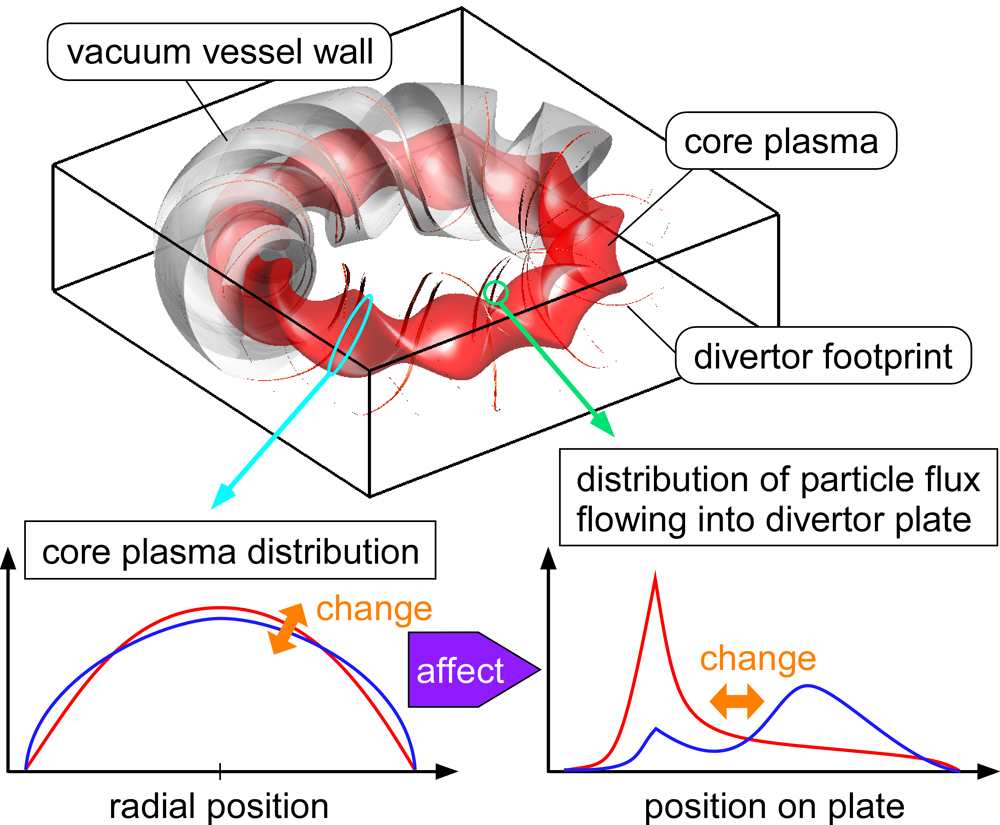Reveals hidden relationship between core and wall-front plasma distributions
By applying a multivariable analysis method to a large data set acquired in the Large Helical Device (LHD), we have shown that there is a significant relationship between core plasma distribution and plasma distribution in front of the wall. This result will contribute to improving the accuracy of heat-load prediction in future fusion devices.

In a fusion reactor, "core plasma" exceeding 100 million degrees floats due to the magnetic field cage and does not directly contact the wall. However, a part of the plasma leaking out of the cage forms a leg-like shape along the magnetic field lines and connects to a heat-resistant material (carbon or tungsten) called a "divertor plate". In future power reactors, the plasma heat flow escaping from the core will be enormous compared to existing devices, and a method to reduce the heat flux must be established. In addition, in order to accurately predict the heat load, it is important to understand the mechanism that determines how the plasma legs make the footprint on the divertor plate. In the Large Helical Device (LHD), multiple factors that modify the footprint distribution have been previously identified. However, the mechanisms of some of the distribution changes have not been fully understood.
In this study, we investigated the relationship between the distribution of plasma particle flow reaching the divertor plate (divertor particle flux) and the distribution of the core plasma parameter (electron static pressure) using large-scale experimental data obtained at the LHD. First, a data set was created that excluded previously known distribution variation factors, and then the proper orthogonal decomposition method, which is one of the multivariable analysis techniques, was applied to the plasma data, both on the divertor plate and in the core. Using this method, the spatiotemporal data set can be decomposed into multiple independent components (modes) along space or time.
The analysis results show that the distribution on the divertor plate is mostly determined by the first and second modes in the spatial domain, and that the characteristics of the distribution can be expressed by using the ratio of their coefficients (temporal component) as an index. Furthermore, it was confirmed that there is a significant correlation between this index and several dominant modes of the core plasma. This result indicates that a change in the footprint distribution, for which the cause has not been fully understood, can be explained by a change in the magnetic field structure around the divertor plate, due to a specific distribution of the core plasma.
This research result was published on March 29, 2023 in Plasma and Fusion Research, an online journal by the Japan Society of Plasma Science and Nuclear Fusion Research.
